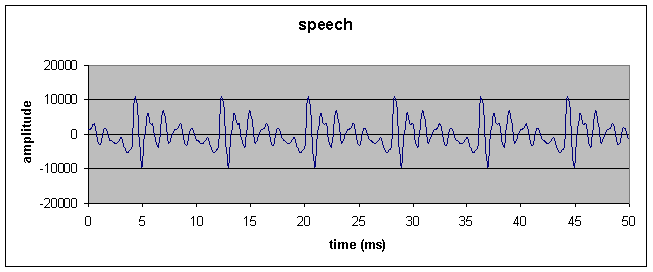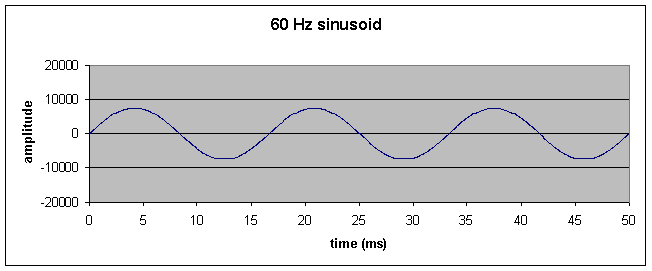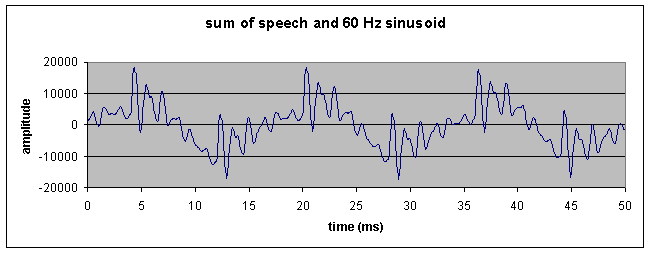DEPARTMENT OF SPEECH, HEARING & PHONETIC SCIENCES UCL Division of Psychology & Language Sciences |
 |
Further notes about additivity
Let's use the simplest example of an LTI system, a high quality amplifier. Suppose we input to this system a waveform corresponding to a simple vowel, "ah". At the amplifier output, we might see:

Let's now input a 60 Hz sinusoid and look at the system output:

The essence of additivity is that if we add together the two separate inputs (by which we mean add together their instantaneous amplitudes at each moment of time), then the output signal arising from the sum of the two inputs will be the same as the sum of the two output signals, in this case:

An Excel file contains all the values and calculations used to make these figures, whereas here is an SFS file containing all the waves (for those of you who use SFS).
A closely related concept to additivity, often discussed by physicists, is known as 'the principle of superposition'. You will find a discussion of this in most elementary physics textbooks in treatments of waves. I can recommend Chapter 17 of Halliday, Resnick & Walker (1993), particularly pp 486-487. In their words "... the principle of superposition ... says that when several effects occur simultaneously, their net effect is the sum of the individual effects". You should be able to see this is essentially the same concept as additivity.
Here's an acoustic example of the principle of superposition. Suppose you had a very quiet room, with two loudspeakers together at one end of the room, and a single microphone in a third corner. We can think of the 'system' as the entire room (including the air), with all the objects in it. And we will think of the sounds played from the loudspeakers into the room as the input. Now imagine playing through one loudspeaker a recording of someone saying the vowel 'ah', and then recording from the microphone the resultant acoustic wave, which might look like the wave shown above.
Now imagine a 60 Hz sinusoid being played through the other loudspeaker, again on its own, so that the resultant wave at the microphone might look like the sinusoid above. The principle of superposition states that if both sounds are played simultaneously, the output recorded from the microphone will be just the same as the sum of the two microphone signals of the sounds played separately, added together on a moment-by-moment basis.
Reference
Halliday D, Resnick R & Walker J (1993) Fundamentals of Physics [4th
ed]. J Wiley & Sons: New York.